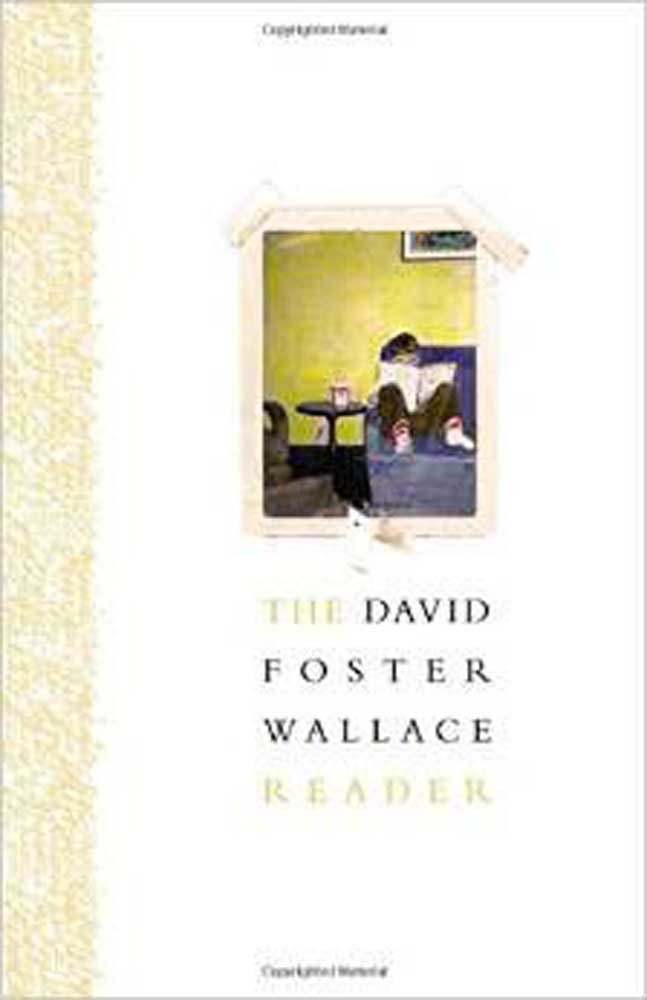In excerpts, a quick glimpse of genius
Published 12:00 am Sunday, December 21, 2014

- In excerpts, a quick glimpse of genius
The time is right for “The David Foster Wallace Reader,” an anthology meant to serve different purposes for different readers. For the casual ones, if Wallace has any, it’s a solid but compact Greatest Hits collection: David Foster Wallace Lite. After all, he is best-known for “Infinite Jest” (1996), a 1,079-page novel that by itself is more than 110 pages longer than this collection.
As a reintroduction, or even introduction, to Wallace, who committed suicide in 2008, it’s a reminder of what a transgressive, digressive delight he could be. For teachers, it’s a textbook geared to orthodoxy-free students who can pierce the carapace of Wallace’s reputation and read his work with fresh eyes. And even for those who race through it, it’s a jolt of sheer genius — and a horror. There are immense, intricate, leisurely pleasures to be had here, and they should not be glimpsed like the landscape from a speeding train.
This book’s editors have tried to span the range of his talents, knowing full well what an impossible task that is. All they can do is offer a selection of his fiction (excerpts that amount to 600 pages’ worth of text), then add a smaller sampling of his nonfiction and journalism.
The novelty material that bridges the gap between fiction and nonfiction sounds more exciting than it turns out to be. This is a selection of both Wallace’s teaching syllabuses (Renata Adler, George Saunders, J.D. Salinger and Joan Didion were among the writers he taught) and the emails full of grammatical arcana that he delightedly exchanged with his mother and fellow teacher, Sally Foster Wallace.
Reading these feels like intruding on some mysterious but highly charged intimacy. (“Mom: We were doing lie/lay the other night, and someone asked me what the following tense is: ‘The tractor was lying in the yard.’ Is that the perpetual past? Why is it not laying, since ‘lay’ is the past participle of ‘lie’? I sweated and ahem’d; I fingered my tie-knot. I didn’t know what to say.”) It also feels like encountering world-class participle wranglers with whom you would never want to split hairs.
Reading Wallace’s lesson plans conjures the dream of hearing him teach his own work. He routinely asked students to name pieces of writing that meant something to them and “explain what about each story gets to you so much, if you can.” He did his best to coax forth honest answers. And he was much better at discussing good writing than at cooking up examples of the bad stuff. (“She’s the mother of a 2-year-old who works 16 hours a day.”) However disjointed this anthology’s fiction excerpts are, they can’t help emphasizing that even Wallace’s only real failing, logorrhea, was a stealth virtue: His words had trouble wearing out their welcome.
“The David Foster Wallace Reader” would have benefited from a biographical essay that added some context for the man and his life. Readers shouldn’t have to extrapolate from fiction, but he makes that pretty inevitable. Yes, he was an ace tennis player in his school years, to the point where it was one of the great euphoric experiences of his lifetime. Yes, he also fought (and ultimately lost) a long and terrible battle with depression.
This book begins with the 1984 story “The Planet Trillaphon as It Stands in Relation to the Bad Thing,” Wallace’s first published work of fiction. It appeared during his undergraduate years at Amherst College and describes the reasons that its central character is now living as an extraterrestrial, thanks to the help of an antidepressant drug and electroconvulsive therapy. All the trouble started “after a really highly ridiculous incident involving electrical appliances in the bathtub about which I really don’t wish to say a whole lot,” he cautiously allows.
In addition to being the kind of illustration of bad sentence construction with which Wallace would later provide his students, that quotation offers proof that there was not much he couldn’t turn into fodder for humor, even when it so clearly rang true. In his early 20s, he could write with eerie prescience about depression (“the Bad Thing”) as something that devoured the body, and suicide as a matter of “just being orderly.” The story’s whole gambit is to understate the ghastly things that happen to the “troubled little soldier” who narrates it. What looks remarkable, in retrospect, is the young writer’s absolute control of material that must have been no small source of anguish, as well as creative inspiration.
It’s easier to anthologize a short story than a behemoth of a novel. And the big books suffer from an inevitable choppiness here. The editors and critics who served in advisory positions provide commentary on disjointed excerpts from “Infinite Jest” (about 200 pages of it) and “The Pale King,” among other works. Together, they provide a spectrum of glimpses into long, well-populated books that can’t possibly be grasped this way.
The only conceivable advantage to such choppiness is to offer a sense of Wallace’s virtuosity, whether as a fantasist, a maximalist, an ethicist (in his nonfiction), a tourist (on the cruise ship Zenith, which he mentally rechristened Nadir, for his classic travel piece “A Supposedly Fun Thing I’ll Never Do Again”) or culture critic (“E Unibus Pluram”). Some readers, with appetites whetted by one mere liftable book, may come away from this collection ready to revisit David Foster Wallace’s writings in their unexpurgated native state.






